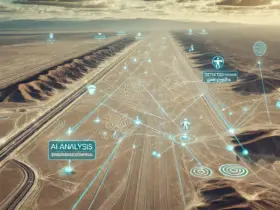The AI community is buzzing with excitement as OpenAI unveils its next major leap in artificial intelligence—GPT-5, now being referred to as “Reasoners.” This new iteration promises capabilities that far surpass its predecessors, marking a significant milestone on the path to achieving artificial general intelligence (AGI). Let’s delve into the stunning details revealed about GPT-5 and explore why this development is more monumental than it might initially appear.
The Leap to Reasoners
OpenAI has introduced a new classification system to gauge progress toward AGI, consisting of five levels. Currently, AI is at Level 1, characterized by conversational abilities seen in models like GPT-4. However, the leap to Level 2, termed “Reasoners,” represents a system capable of solving problems at the level of a human with a doctoral degree, without the aid of external tools. This implies that GPT-5 will not only generate text but will also possess advanced reasoning abilities, making it a formidable tool for complex problem-solving tasks.
PhD-Level Intelligence
The notion of AI performing at a PhD level is groundbreaking. A PhD represents the pinnacle of academic achievement, entailing years of rigorous research and the creation of new knowledge. For AI to emulate this level of expertise is nothing short of extraordinary. OpenAI’s vision is to create systems that can perform specific tasks with the proficiency of highly educated humans. This involves a deep understanding of complex concepts and the ability to apply this knowledge to solve novel problems.
Implications for Various Fields
The implications of GPT-5’s capabilities are vast. In academia, it could assist researchers by analyzing data, formulating hypotheses, and even drafting scholarly papers. In industries, it can streamline operations, optimize processes, and drive innovation by solving intricate problems that currently require human intellect.
Secretive Developments and Skepticism
The details about GPT-5 were leaked through a Bloomberg report, indicating OpenAI’s cautious approach to disclosing advancements. This cautiousness is likely due to the immense potential and the corresponding risks associated with releasing such powerful AI models. There is a precedent for this with OpenAI’s previous projects, like the Sora technology, which was never publicly released due to potential misuse concerns.
Skepticism has surrounded OpenAI’s claims, primarily because the organization has been criticized in the past for overhyping its products. However, recent statements from high-ranking officials at both OpenAI and Microsoft have validated the PhD-level capabilities of GPT-5. For instance, Kevin Scott, CTO of Microsoft, likened GPT-5’s potential to that of a PhD student’s expertise. Similarly, Mira Murati, CTO of OpenAI, predicted that the next-gen models would indeed achieve such intellectual heights.
Advanced Reasoning and Human-Like Problem Solving
GPT-5’s advancement is particularly significant because it aims to overcome one of the main limitations of current AI—reasoning and problem-solving. Current AI models excel at generating coherent text based on patterns but often fall short in understanding and reasoning through complex problems. GPT-5’s ability to reason at a human doctoral level suggests a paradigm shift where AI can contribute more significantly to intellectual and creative tasks.
Economic and Ethical Considerations
With such advanced capabilities, GPT-5 could revolutionize various sectors, from healthcare and finance to education and entertainment. However, this also raises ethical concerns regarding job displacement and the potential misuse of AI. OpenAI’s strategy of iterative deployment, where new technologies are rolled out in phases to ensure safe and ethical implementation, is crucial in addressing these concerns.
Future Prospects and Levels Beyond Reasoners
OpenAI’s roadmap includes further levels beyond Reasoners. These levels envision AI systems that can take autonomous actions (Level 3), aid in innovative processes (Level 4), and eventually perform the work of entire organizations (Level 5). While Level 5 is still a distant goal, the progression from Reasoners to autonomous agents represents an incremental yet profound advancement in AI’s capabilities.
In conclusion, the release of GPT-5 details marks a significant milestone in the journey toward AGI. With its PhD-level reasoning abilities, GPT-5 is set to transform numerous fields by providing sophisticated problem-solving capabilities. As we stand on the brink of this new era, the focus on ethical deployment and safe use remains paramount to harnessing the full potential of this groundbreaking technology.











Leave a Reply